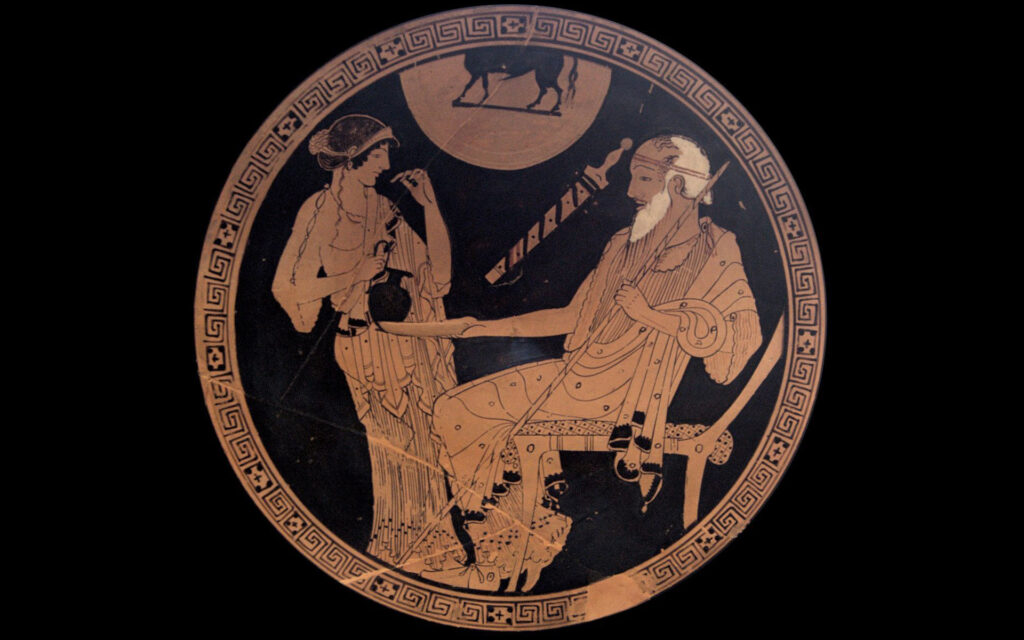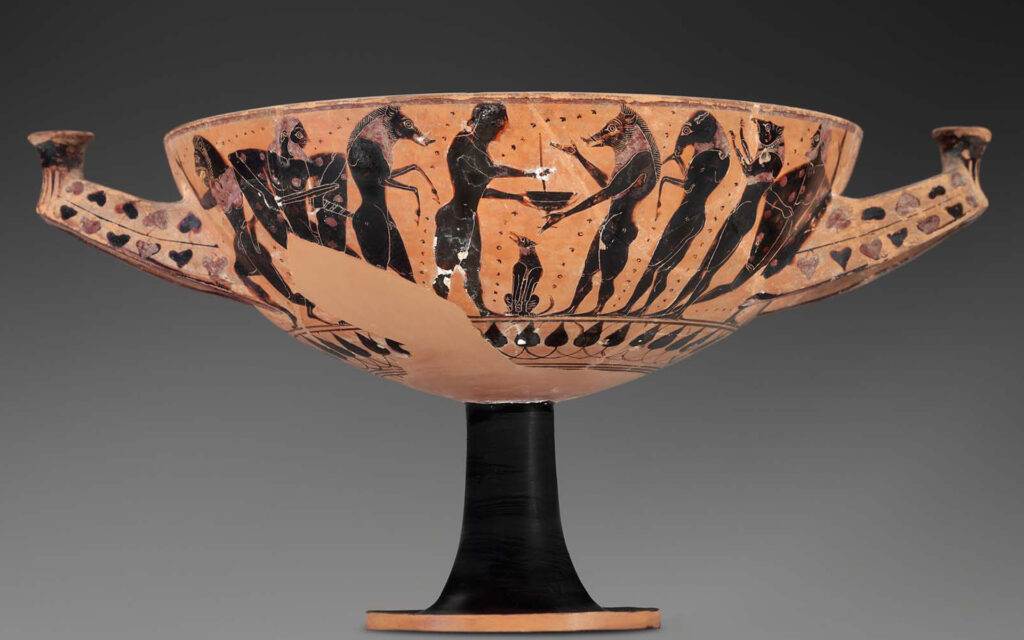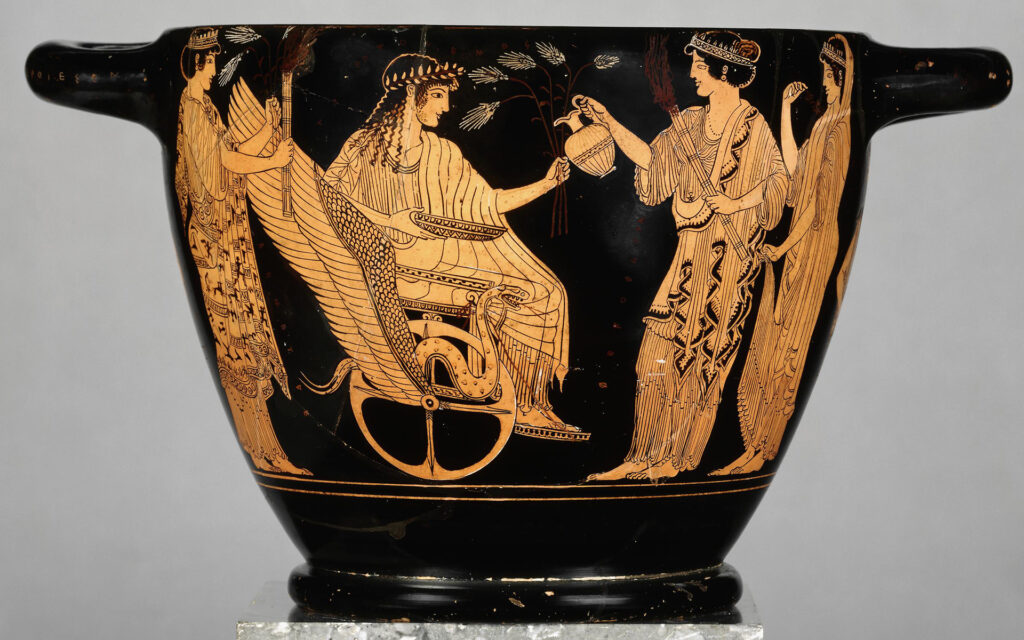Soma
Soma, as it is called in the Rigveda, was a ritual drink prepared with potent magical ingredients. This entheogenic draught is found in several Indo-European cultures, from the North Indians of the Vedic period through to its possible use by the Nordic berserkers of the 9th and 10th centuries. While the ingredients may have varied due to the different environments in which the various tribes around themselves, the main constituents of the original Vedic Soma remain unknown. according to the most ancient accounts, Soma was used in a ritual setting or before battle.
The first literary reference to it is in the Rigveda in the 2nd millennium BCE. It is drunk by Indra before he battles the serpent Vritra. The Indo-Aryan Haoma is described in the Avestan Yasna (2nd millennium BCE) as a drink that grants “speed and strength to warriors.”
Where then, in the the Greek tradition, does Soma appear?

Abrosia
The Ambrosia of the gods, a drink that granted them immortality, is identified by many scholars as being cognate with the Indian Amrita, which in turn is equated to Soma. The Sanskrit word Amrita means “immortality” as this, along with wisdom and power, is what the drink was said to impart to the gods. Nektar, an associated food/drink of the Greek gods has the meaning of “overcoming death.”
Ambrosia appears several times in the mythological record. Aside from the gods consuming it, Achilles is anointed in it by his mother Thetis to make him invulnerable and Apollo anoints the body of Sarpedon with it in the Iliad. Calypso in the Odyssey tells us the Olympian gods are brought Ambrosia by doves and it is used by Aphrodite as an oil in her Homeric hymn.
In these instances, Ambrosia is both consumed and used externally. This magic potion confers the immortal power and strength, much like Soma.

Prometheon
In the Argonautika, the hero Jason uses a potion derived from the Prometheon root before ploughing the fields of Aietes. In my book Undying Glory: the Solar Path of Greek Heroes, I describe the scene in detail, as well as interpreting the details of the mythos.
Medeia, priestess of the goddess Hekate, prepares an elixir for Jason from the root of a plant known as Prometheon. The plant grew from the drops of blood shed by the Titan Prometheus when the Eagle of Zeus pecked out his liver each day. Medeia pulls the taproot of the plant, which looks like freshly-slaughtered flesh, and after a ritual, prepares a potion from it. Jason also conducts a ritual with a sacrifice to the goddess Hekate before using the potion. When he uses it, it is as a balm, rather than a drink. He covers himself and his weapons with it before he yokes the fire-breathing bulls and reaps the earthborn men.
The location of this story and the root are of interest, as the kingdom of Aietes is on the “edge of the world” and Prometheon is found in the Caucasus Mountains. This supports the idea that the Prometheon potion is the Soma of the Indo-Europeans, originating in their potential ancestral homeland in the Pontic Steppe. The connection to Prometheus is also important here, as he is the god that most resembles man, being the first to make a sacrifice and the bringer of fire. Hence, the Titanic deity made human existence human, elevating man above the animal realm and no longer fully submissive to the gods. In the words of Karl Kerenyi:
“as soon as man is man… …man becomes unable to submit. And the sufferings that spring from unsubmissiveness are special sufferings that exceed those of the animals – they become, in a sense, punishments.”
This share of the Soma, originally only intended for the gods, is given to man through Prometheus who assumes the punishment for man’s ascent.

Kykeon
Aside from this mythical version of soma, the Greeks utilised an entheogenic draught during initiatory mysteries. While little is known of the mysteries at Eleusis, we know that the initiates would break their fast with a drink known as Kykeon.
Kykeon was a wine-based drink that was popular with the rural Greeks, and appears in the Greek mythological and historical record several times. In the Iliad, it is given as as a healing tonic to Nestor and his companions. The version here is made with Pramnian wine, shredded goats cheese, barley and honey, garnished with onions. The same draught is prepared by Kirke for Odysseus and his men in the Odyssey, but the sorceress also infuses it with her magic potion to turn them into pigs.
This is not likely the Kykeon served during the Eleusinian Mysteries, as the Homeric hymn to Demeter indicates. In the hymn, which serves as the story behind the mysteries, the goddess Demeter is served Kykeon made with water, barley meal and pennyroyal. During the mystery initiation, celebrants would face death and journey into the Underworld. Some scholars have claimed that the Kykeon at Eleusis was entheogenic, with either ergot fungus of barley, paspalum grass ergot, or a hallucinogenic mushroom as the active agent. This magic potion would provide the initiates with visions of the Underworld, unlocking its secrets.
This entheogenic Kykeon is more in line with the Soma of the Indo-Europeans with it’s “magical” properties, than the Homeric drink given to heroes. That it is given to both heroes in one context and to mystery cult initiates in another furthers the case of Kykeon being a Greek Soma.